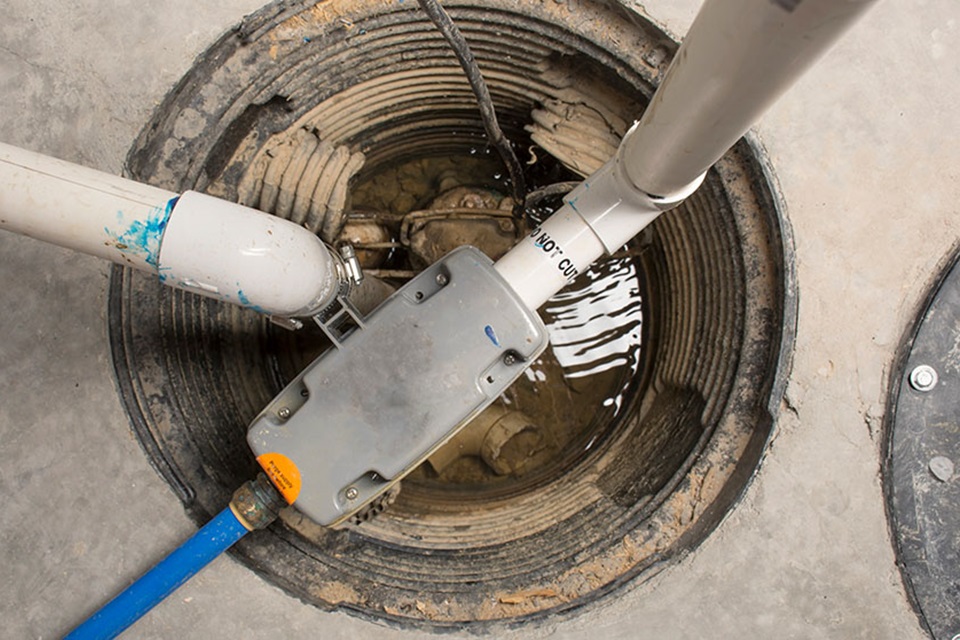The sump pump is a critical piece of equipment for a home that has a basement or area of living that is below the ground level. Outside water has a habit of traveling and following gravity. While home basements and subterranean levels are constructed to be sound and hold up the weight of the structure above, they are still made of concrete. That same material is permeable, which means water can penetrate it. Because moisture and water can get into a lower level, then there needs to be a mechanism to remove it so the water does not flood below.
Table of Contents
How A Sump Pump Keeps A Basement Dry
The mechanism of a sump pump basically works in combination with the drain system already laid into the floor, a lower level room or cavity, as the water comes into the area. The liquid goes to the lowest level, which is the drain. As the water goes into the drain it then collects into a reservoir. Once the water level reaches a certain point, the sump pump turns on and starts pumping the water up and out of the home sub level so that it is cleared and drains properly in a city drain area or something similar. However, there can be problems over time with the mechanics in the operation of the pump.
Signs Of Sump Trouble
The first noticeable problem will be that the sump pump does not turn on correctly even when triggered. This is typically tested by putting water into the drain system and confirming that the pump actually works. The second problem could be that the pump is working, but it does not have sufficient power to remove the water or the water level is too low. Alternatively, the pump could be working, but there is a blockage in the line where it pumps the water through. In this case, the water doesn’t go anywhere because it cannot properly exit the system. All three of these issues are determined through testing by a sump pump technician, or a user who has experience and knows how to look for sump pump malfunctions.
The fourth situation could be that there is insufficient power going to the sump pump, or the electrical power has been short circuited or cut off where water exposure has gotten to the motor or the wiring of the sump pump. That could short circuit the unit and cause it to turn off and fail, especially when it’s needed the most as water is flooding into the basement or the sub level. Failure is obvious; the system doesn’t work at all.
Finally, the sump pump may be working fine. The problem may be outside in that the water being exited doesn’t go far enough. In this situations, the water is just coming right back to the lowest point in the basement. Extending the exit point for the pump’s work can avoid this problem, especially if it can be connected to the municipal drain system to take the water away from the property completely.
Getting Help
Sump pumps need regular maintenance, cleaning and checking parts to keep them operating correctly over the life of the equipment. Poor maintenance typically leads to problems, as well as the buildup of material that can create bigger issues and flooding in the area where the sump pump is supposed to operate.
Homeowners that schedule regular sump pump maintenance checks and sump pump repair services by an expert technician are well served in that small problems and cleaning issues can be spotted quickly. These concerns can then be resolved before they become a big headache during a heavy rain or a flood. Sump pumps are incredibly reliable, but they are mechanical, and they need to be taken care of to work properly to stay reliable.



